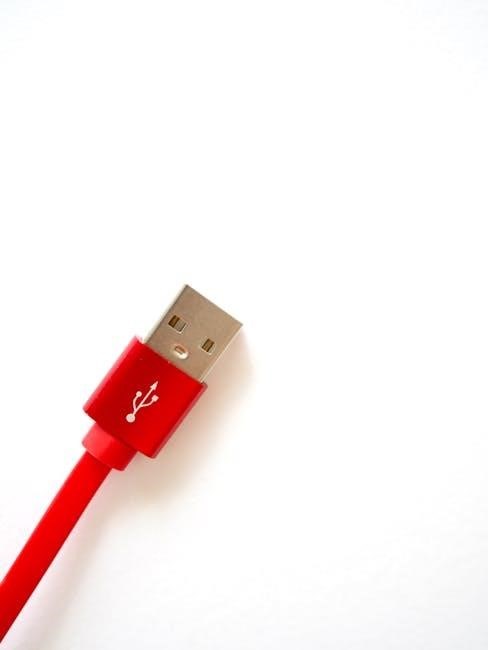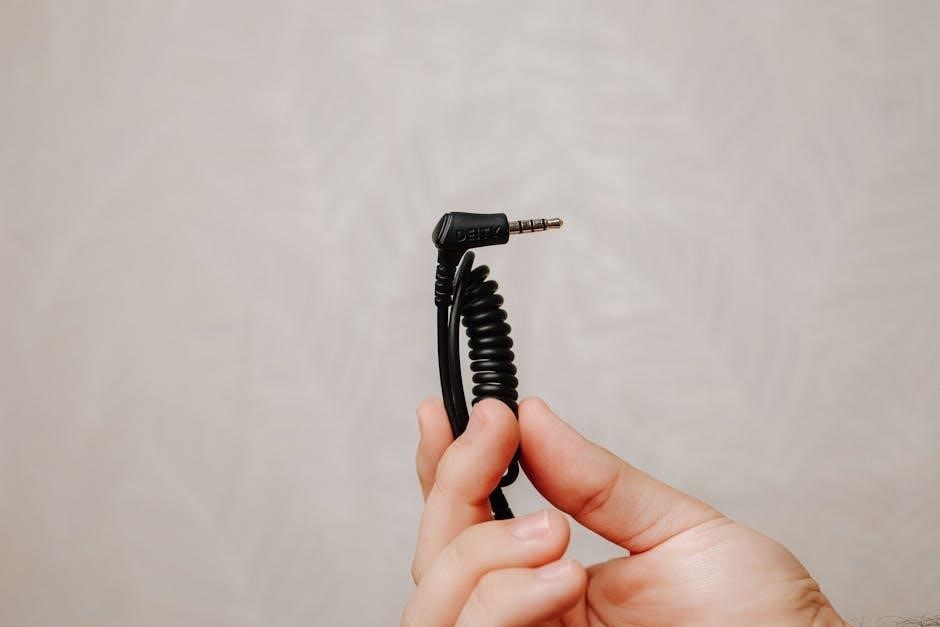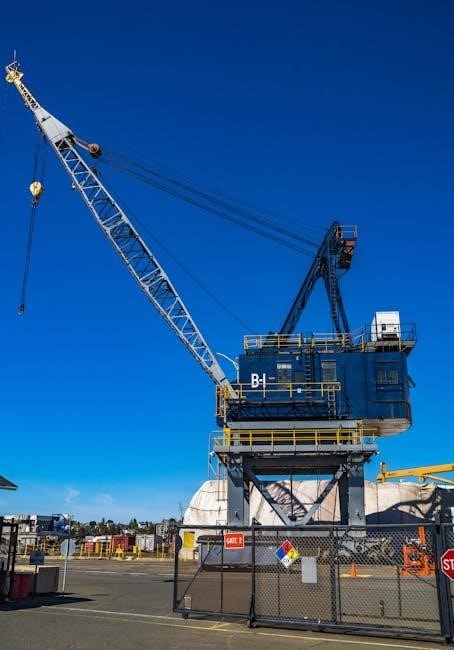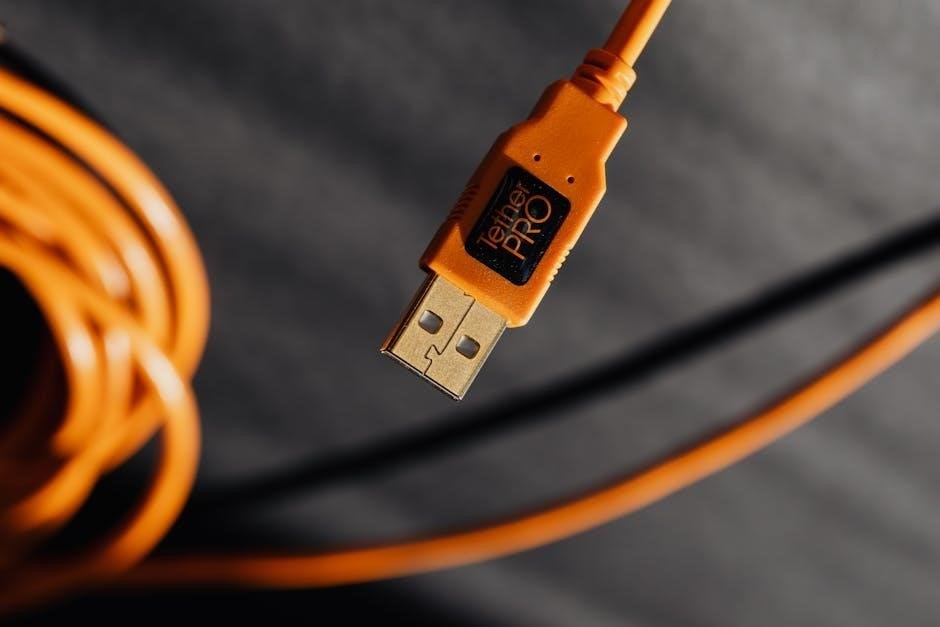Honeywell 2-Port Valves are reliable‚ innovative solutions for controlling fluid flow in heating systems. Designed for easy installation‚ they require minimal wiring and offer efficient performance in various applications.
Key Components of the Wiring System
The wiring system includes wires‚ terminal connections‚ and a junction box. These components ensure secure and efficient connections for controlling the valve’s operation in heating systems.
2.1. Types of Wires Used
The wiring system for Honeywell 2-Port Valves typically involves a combination of 5-wire or 2-wire setups‚ depending on the configuration. The wires are color-coded for easy identification‚ with common colors like red‚ white‚ and blue used for different functions. These wires are designed to handle the electrical signals required to operate the valve’s motor and auxiliary components. Proper wire selection ensures reliable communication between the control system and the valve‚ minimizing the risk of electrical issues. Always refer to the wiring diagram for specific wire assignments and connections.
2.2. Valve Terminal Connections

The Honeywell 2-Port Valve features clearly labeled terminal connections for straightforward wiring. The terminals are designated for specific functions‚ such as the common wire‚ white wire (for cylinder thermostat connections)‚ and blue wire (for central heating demand). Proper connection of these terminals ensures smooth operation and prevents electrical malfunctions. Always refer to the wiring diagram to confirm the correct assignment of wires to terminals‚ as configurations may vary depending on the system setup (e.g.‚ S-Plan or Y-Plan). Correct terminal connections are vital for efficient valve performance and system reliability.
2.3. Junction Box Setup
The junction box serves as the central hub for wiring connections in the Honeywell 2-Port Valve system. It is essential to connect each numbered‚ lettered‚ or colored wire to the correct terminal‚ as outlined in the wiring diagram. The junction box (Part No. 42002116-001) ensures proper communication between the valve and the system controls. For S-Plan configurations‚ the white wire must be electrically isolated to prevent interference. Proper setup of the junction box is critical for safe and efficient operation‚ ensuring all components function seamlessly together.

Understanding Honeywell Wiring Diagrams
Honeywell wiring diagrams provide a comprehensive guide for correct installation and troubleshooting. They help users identify potential issues and ensure safe‚ efficient setup of the 2-Port Valve system.
3.1. S-Plan vs Y-Plan Configurations
The S-Plan and Y-Plan configurations are two common setups for central heating systems. The S-Plan uses multiple zone valves and a programmer to control heating and hot water separately‚ offering greater flexibility. In contrast‚ the Y-Plan is simpler‚ using a single valve and a basic controller‚ ideal for standard systems without a separate hot water cylinder. Honeywell 2-Port Valves are compatible with both configurations‚ and understanding these setups is crucial for proper wiring and system functionality. The wiring diagrams provided by Honeywell help clarify these configurations‚ ensuring accurate installation and operation.
3.2. Colour Coding and Wire Identification
Understanding colour coding and wire identification is crucial for accurate wiring of Honeywell 2-Port Valves. The wires are colour-coded to indicate their function‚ with red typically representing the live supply and blue for neutral. White wires are often used for motor control in S-Plan configurations and must be isolated. Yellow wires may indicate auxiliary switches‚ while green or yellow-green wires are reserved for earth connections. Always refer to the wiring diagram provided by Honeywell to ensure correct connections and avoid potential errors during installation.
3.3. Common Diagram Symbols and Meanings
Honeywell wiring diagrams use standard symbols to represent components. A circle often denotes the valve itself‚ while arrows indicate flow direction. Wires are shown as lines‚ with colors corresponding to their function. Junction boxes are represented by rectangles with internal connections. Switches‚ such as auxiliary ones‚ are shown as squares with lines entering and exiting. These symbols simplify understanding and ensure accurate connections. Familiarizing yourself with them is essential for correct installation and troubleshooting‚ as they provide a clear visual guide to the system’s layout and operation.

Step-by-Step Wiring Instructions
Prepare materials‚ connect wires to valve terminals‚ and ensure secure connections. Follow wiring diagrams for S-Plan or Y-Plan configurations. Test the system for proper functionality and safety.
4.1. Preparing Materials and Tools
Before starting‚ gather essential tools and materials. You’ll need a pipe wrench‚ adjustable spanner‚ and screwdrivers for connections. Ensure you have compression fittings‚ isolating valves‚ and a junction box. For wiring‚ prepare insulated wires‚ cable ties‚ and a multimeter for testing. Safety gear like gloves and goggles is crucial. Familiarize yourself with the wiring diagram specific to your Honeywell 2-port valve configuration (S-Plan or Y-Plan). Organize your workspace to streamline the process and avoid errors.

4.2. Connecting Wires to the Valve Terminals
Start by identifying the terminals on your Honeywell 2-port valve‚ typically labeled 1‚ 2‚ 3‚ 4‚ and 5. Terminal 1 is usually the live wire‚ while terminal 2 is neutral. Terminals 3 and 4 control the valve’s motor‚ and terminal 5 is often for an auxiliary switch. Ensure the power is off before beginning. Strip the wire ends using a wire stripper and connect them securely to the appropriate terminals‚ following your specific wiring diagram for S-Plan or Y-Plan configurations. Double-check all connections for tightness and correctness to ensure proper valve operation.
4.3. Testing the Wiring System
Once all wires are connected‚ perform a thorough test to ensure the system operates correctly. Use a multimeter to check for live voltage at the valve terminals. Verify continuity between connected wires and terminals. Turn on the power and observe the valve’s movement; it should open or close smoothly. Listen for unusual noises and check for excessive heat‚ which could indicate a short circuit. Finally‚ run a full heating cycle to confirm the valve responds to commands. Refer to your wiring diagram to identify any potential issues during testing.
Common Mistakes to Avoid
When wiring a Honeywell 2-port valve‚ common mistakes include incorrect wire connections‚ reversing live and neutral wires‚ and neglecting to isolate the white wire in S-Plan setups. Overlooking the wiring diagram can lead to improper configurations. Additionally‚ failing to tighten connections securely or overtightening compression nuts can cause leaks or damage. Always ensure wires are properly insulated and avoid cross-connections. Ignoring safety precautions‚ such as turning off the power supply before starting‚ can result in electrical hazards. Regularly double-checking connections and referring back to the wiring diagram can help prevent these issues.
Troubleshooting Tips and Solutions
When issues arise‚ consult the wiring diagram to verify connections. Test valve operation by manually switching the motor. Check for loose or incorrect wire connections‚ especially between the valve and junction box. Ensure the power supply matches the valve’s voltage requirements. If the valve fails to open or close‚ inspect for blockages or debris. Verify that the auxiliary switch is properly configured. For persistent issues‚ refer to Honeywell’s technical support or consult a licensed electrician to resolve complex wiring or valve malfunctions effectively.

Safety Precautions and Best Practices
- Always follow Honeywell’s installation and wiring instructions to avoid electrical hazards.
- Ensure the power supply is turned off before starting any wiring or maintenance tasks.
- Use properly rated tools and materials to prevent damage to the valve or wiring system.
- Avoid over-tightening valve connections to prevent damage to threads or seals.
- Handle the valve body with care‚ using a pipe wrench only on the hexagonal fitting to prevent damage.
- Ensure good airflow around the valve head for proper operation and cooling.
- Regularly inspect wires and connections for signs of wear or damage.
- Consult a licensed electrician if unsure about any aspect of the wiring process.

Advanced Configurations
Advanced setups include installing multiple valves for zone control‚ integrating with smart thermostats‚ and configuring complex systems for optimal performance and efficiency in heating applications.
8.1. Installing Multiple Valves
Installing multiple Honeywell 2-port valves enables zone control‚ allowing precise temperature regulation in different areas. Each valve operates independently‚ ensuring efficient heating. Proper wiring is essential‚ with clear connections to junction boxes and thermostats. Ensure isolation of specific wires in S-Plan setups. Regular maintenance‚ like checking wire connections and valve seals‚ prevents issues. Follow diagrams for correct multi-valve configurations to maintain system performance and avoid damage. Proper setup ensures optimal energy use and comfort across all zones.
8.2. Integrating with Smart Thermostats
Integrating Honeywell 2-port valves with smart thermostats enhances system efficiency and convenience. Compatibility with smart systems allows remote temperature control and scheduling. Wiring involves connecting the valve to the smart thermostat’s junction box‚ ensuring proper wire identification and connections. A common wire is often required for power. This integration enables features like geofencing and voice control‚ optimizing heating performance. Regular updates and maintenance ensure seamless operation. Proper setup guarantees energy savings and improved comfort‚ making it a modern solution for advanced heating systems.
8.3. Setting Up Zone Control Systems
Setting up zone control systems with Honeywell 2-port valves allows precise temperature regulation across multiple areas. Start by identifying zones and connecting valves to a central control system. Use wiring diagrams to ensure correct connections between valves‚ thermostats‚ and junction boxes. S-Plan and Y-Plan configurations are common setups. Proper wiring ensures independent operation of each zone. Test the system to confirm all zones function correctly. This setup enhances energy efficiency and comfort by tailoring heating to specific areas‚ making it ideal for modern smart homes.
Maintenance and Upkeep
Regular maintenance ensures optimal performance of Honeywell 2-port valves. Inspect valve ports for debris and clean them to maintain proper flow. Check wiring connections for tightness and signs of wear. Replace any damaged or corroded components promptly. Periodically test valve operation to ensure smooth opening and closing. Follow Honeywell’s maintenance guidelines to uphold warranty and safety standards. Proper upkeep prevents unexpected failures and ensures efficient system operation. Address minor issues early to avoid major repairs and maintain consistent heating control.